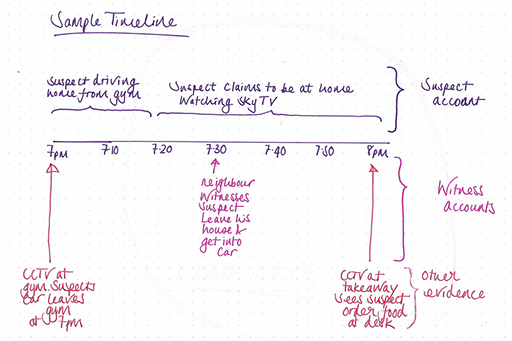2.2 Using timelines in investigations
The timeline of events is an important tool that police use in an investigation. It allows the officers to establish when key events related to the crime happened.
A timeline will include both physical and digital evidence (such as CCTV footage, payment receipts and phone calls, for example) as well as evidence from the people that might have been involved in the crime (including suspect and witness accounts). It is a simple way for investigators to keep track of the information that is known about the criminal event in a way that allows them to develop lines of enquiry, and also enables the investigation team to notice where there are discrepancies in the accounts of what happened.
A timeline will start at a certain date and time that is relevant to the offence and will stop at a certain date and time. The timeline will run from the left-hand side of the page with the first significant time, through to the right-hand side of the page with the final time. It will record all the information about what happened during that period and will be organised by the source of that information. Sometimes colour will be used to organise the source of the information to make the timeline simpler to interpret (for example all the witness statement information might be in pink, all the suspect information in purple and all the other evidence in red).

